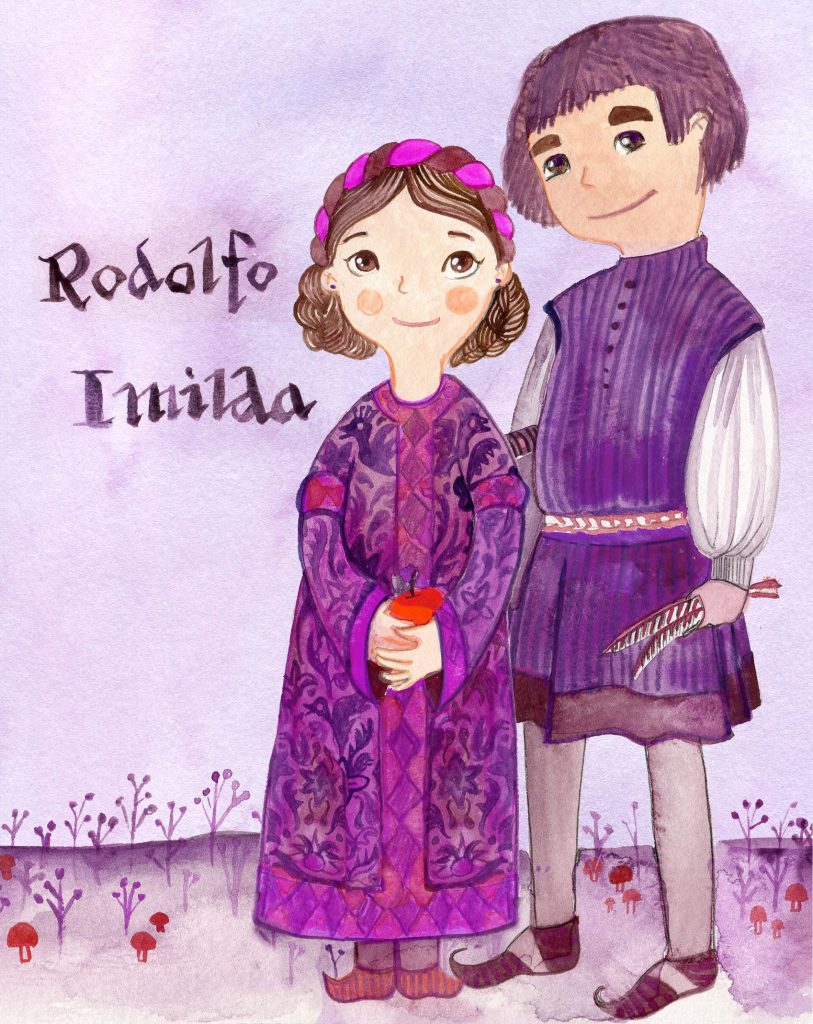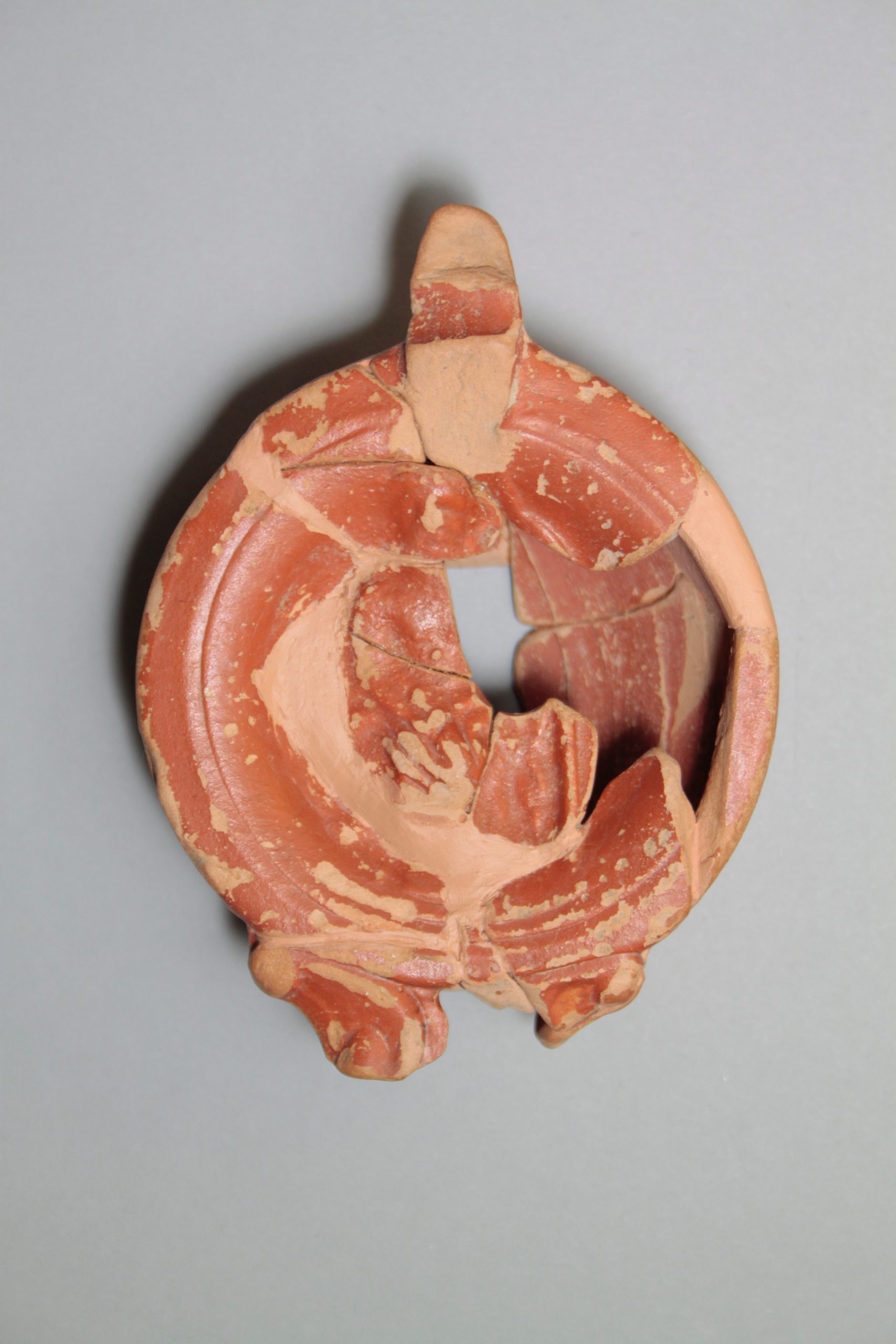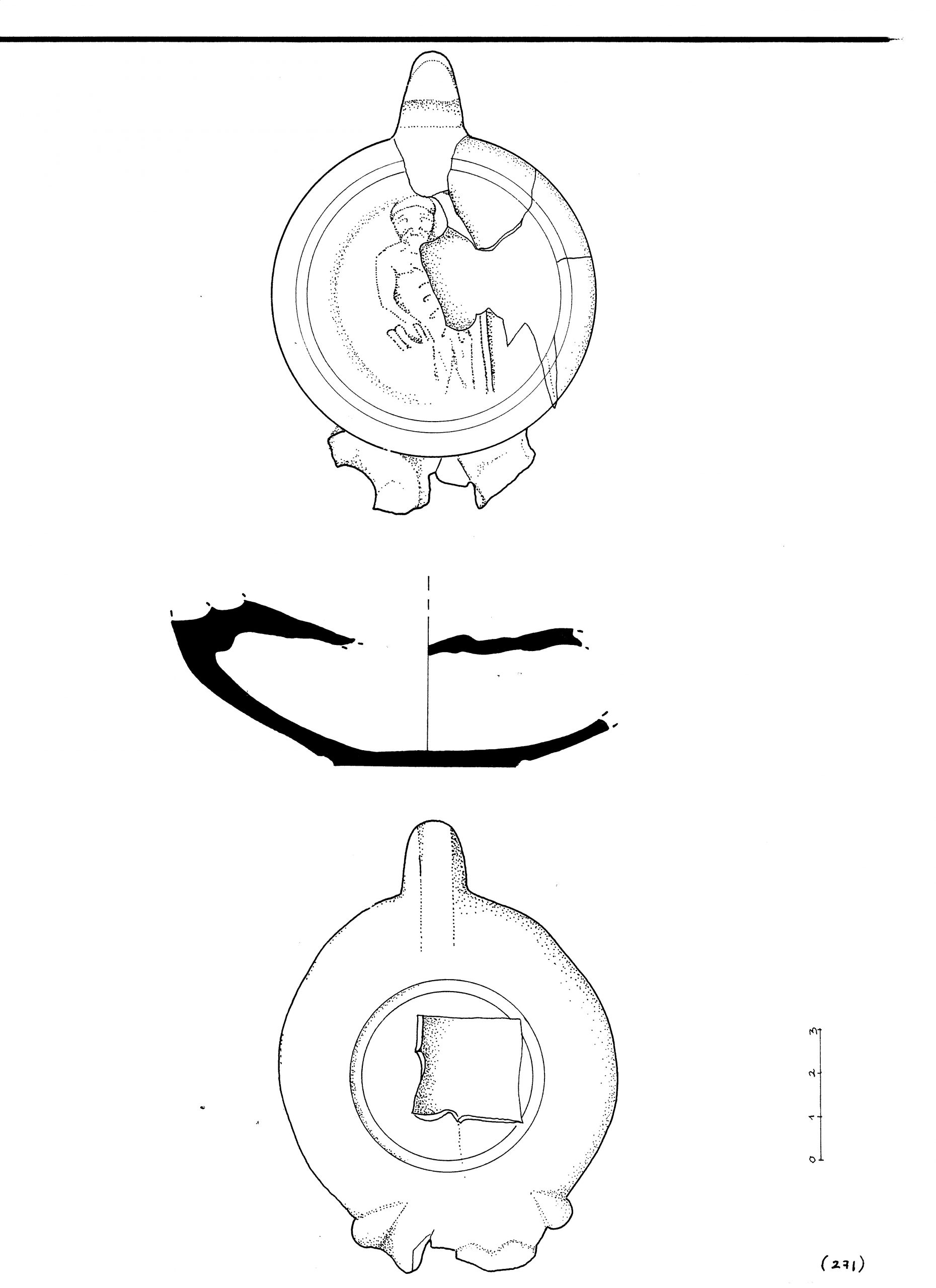
Roman Cetamura
Oil Lamp
Period | Roman |
Year | ca. 37 – 68 CE |
Material | Ceramic with red gloss slip |
Location | Well #1 |
Cet. Inventory | Inv. C-12-462 |
This lamp of the early Roman Empire, probably intentionally destroyed and painstakingly restored from many tiny fragments, seems to show an enthroned male holding a scepter, probably the chief Roman god Jupiter.
Prov. 5N/18W. 83. H: 3cm. Diam. of top, 7.5; of base 4.3. Wt. 62.62 g (restored) Munsell: 7.5 YR 6/4 “light brown” (paste); 5 YR 5/6 “yellowish red” (slip)
The most complete of the lamps from Well # 1, this mold-made example is recomposed from numerous fragments excavated from loci 83 to 88. It has a wide, rounded shoulder separated from the discus with one groove, with only the bottom portion of the ring-type handle preserved. The front top portion of a volute-type nozzle is preserved, probably of the angular type. An air hole is visible just below the shoulder between the grooves of the nozzle, and traces of a filling hole are preserved in the middle of the discus. The base is intact except for a squared area near center.
The scene features a mature bearded male seated, perhaps on a throne. Traces of chair legs are visible at the bottom edge. He is nude to the waist with some drapery across the lap, and grasps what appears to be a sturdy scepter or staff in his left hand. Lamps depicting Jupiter enthroned (in Capitoline Triad, e.g. Bailey Q 1238; with eagle, e.g. Bailey Q 948) are somewhat similar. Loeschcke Type I C Campanian variant, shoulder form IV b, last third of 1st century CE, cf. Bailey 839.
Dating: Found in Well Group VII (ca. 37-68 CE).
Bibl. Bailey 1980, 151.
Etruscan activities for kids
Meet Lucius & Fulvia
Roman activities for kids

Meet Rodolfo & Imilda
Medieval activities for kids






